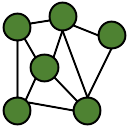1using System.Net.Security;
2using System.Threading.Tasks;
Interface for authentication mechanisms.
Task< bool?> AuthenticationRequest(string Data, ISaslServerSide Connection, ISaslPersistenceLayer PersistenceLayer)
Authentication request has been made.
Task< bool?> Authenticate(string UserName, string Password, ISaslClientSide Connection)
Authenticates the user using the provided credentials.
bool Allowed(SslStream SslStream)
Checks if a mechanism is allowed during the current conditions.
Task Initialize()
Performs intitialization of the mechanism. Can be used to set static properties that will be used thr...
Task< bool?> ResponseRequest(string Data, ISaslServerSide Connection, ISaslPersistenceLayer PersistenceLayer)
Response request has been made.
string Name
Name of the mechanism.
int Weight
Weight of mechanisms. The higher the value, the more preferred.
Interface for client-side client connections.
Interface for XMPP Server persistence layers. The persistence layer should implement caching.
Interface for server-side client connections.

